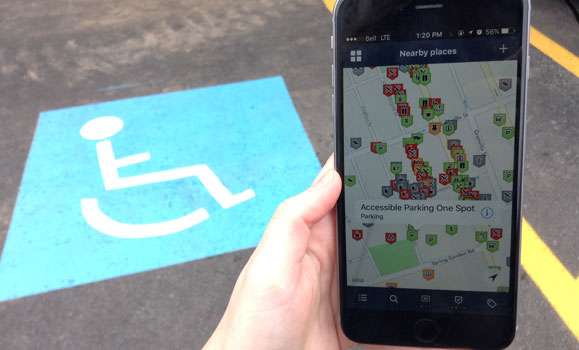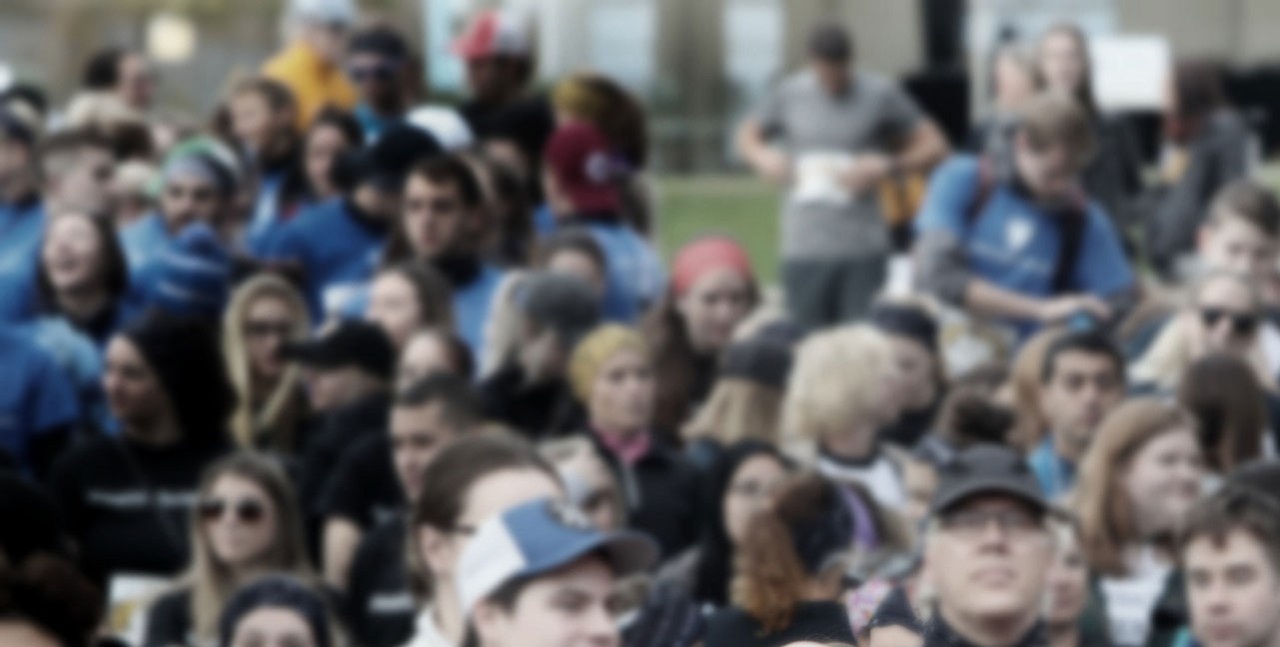News
» Go to news mainOccupational therapy student project helps communities map out accessible spaces

Opening a door, climbing stairs, using the washroom. All are activities to which few of us give a second thought. Yet for the nearly 33 million Canadians in a wheelchair, accessibility in public spaces is a daily ordeal.
First year students in Dr. Brenda Merritt’s occupational therapy theory class are using Wheelmap, an online database and smartphone app, to help inform wheelchair users of the accessible spaces in the city. With this data, persons with mobility challenges can make informed decisions when planning their outings or vacations.
“I wanted a project where the students contributed to their community, as this type of service learning is more engaging for the students than traditional assignments and it tends to lead to deeper learning,” says Merritt, describing her vision behind the Wheelmap project.
A one-stop shop for accessible places
Wheelmap is a worldwide map, laid out similar to Google Maps. Coloured markers on businesses, services and buildings label levels of accessibility. Red means not wheelchair accessible, orange depicts partial accessibility, green signifies accessibility and grey indicates that a location has not been assessed. Clicking on a building details if space interiors or washrooms are accessible. The database gives users the option to add photos or comments.
Much like Wikipedia, Wheelmap is an open program that relies on a grassroots network for content. Anyone anywhere can create a login and add to or edit spaces on the website or app.
The Wheelmap OT project
Merritt, an Associate Professor in the School of Occupational Therapy and Associate Dean Academic in the Faculty of Health Professions, introduced the project last year. That group of students focused on assessing spaces on the Halifax peninsula and Dartmouth.
In addition to contributing to the Wheelmap database, the project also requires students to identify a location and create a fictional client: a wheelchair user with specific needs. The students then write an assessment of the client’s ability to access the physical and social spaces and services within the chosen community setting.
“The students have to look at more than physical spaces,” says Merritt. “They need to also evaluate issues concerning social inclusion and how the space may impact mental health. Just getting in the door is not the most important thing.”
Documenting accessibility around Halifax
Last year the class analyzed 378 sites. They found 57% were accessible, 30% were inaccessible and 12% partially accessible. Of the approximately 229 washrooms evaluated, 44% were accessible, 53% were not accessible, and 3% partially accessible. Their findings show restaurants were the least accessible for general accessibility and washrooms.
Students found that the emphasis on historical preservation in Halifax as well as structural issues and high costs makes it difficult for owners to do renovations. Lack of awareness of accessibility needs is also a factor in the prevalence of inaccessible spaces.
“I think a lot of businesses want to be more accessible but don’t have the resources to make the needed structural changes,” says Merritt, noting that some business owners were often hesitant and even embarrassed to have students evaluate their space.
The students found the most rewarding part of the Wheelmap project was gaining awareness of the importance of universal accessibility.
“It gives us an idea of what future potential clients are going through,” says Stephanie Bizzet, an OT student who completed the project last year. “Understanding that as occupational therapists, can help us help them.”
Adding to the map
This year students could choose any location and some ventured to other communities such as Lunenburg. Over the last several weeks the occupational therapy students evaluated a total 180 community sites. Many students – curious about their university’s accessibility – chose areas on the Dalhousie campus. One of those students was Zachary MacNeil.
MacNeil hopes that boosting the content on Wheelmap will make more people aware of accessibility issues around the city. “This data we’re obtaining can inform policy makers and decision makers to see where their weaknesses and strengths are, and where they can improve accessibility in the future.”
As the second year of this project wraps up, Merritt is pleased with its continued impact. “In total, our occupational therapy students have used Wheelmap to evaluate the accessibility of 558 spaces in our community. In the future, our students may also evaluate different aspects of accessibility, for example students could evaluate the accessibility of community spaces for use by individuals with visual, hearing and/or cognitive impairments.”
“My hope is that we can build broader awareness of accessibility issues and that more of our community contributes to the Wheelmap database. It would be great to see our all of community spaces mapped and rated.”
Recent News
- Practicing what we preach: The importance of leisure and recreation for those who study, teach and work in health
- Dal Health announces new Associate Dean, Equity and Inclusion
- New Director announced for College of Pharmacy
- PhD in Health candidate recognized for her innovation in cancer research
- Dal Health’s School of Nursing to offer Atlantic Canada’s First Master of Nursing, mental health and addictions
- Dr. Catherine Mah is taking aim at social impacts on food purchasing and diet
- Faculty of Health research project finds creative culmination in Nocturne 2023 exhibit
- STAFF SNAPSHOT: Wendy Terris Klaus, Manager, e‑Learning, School of Social Work
